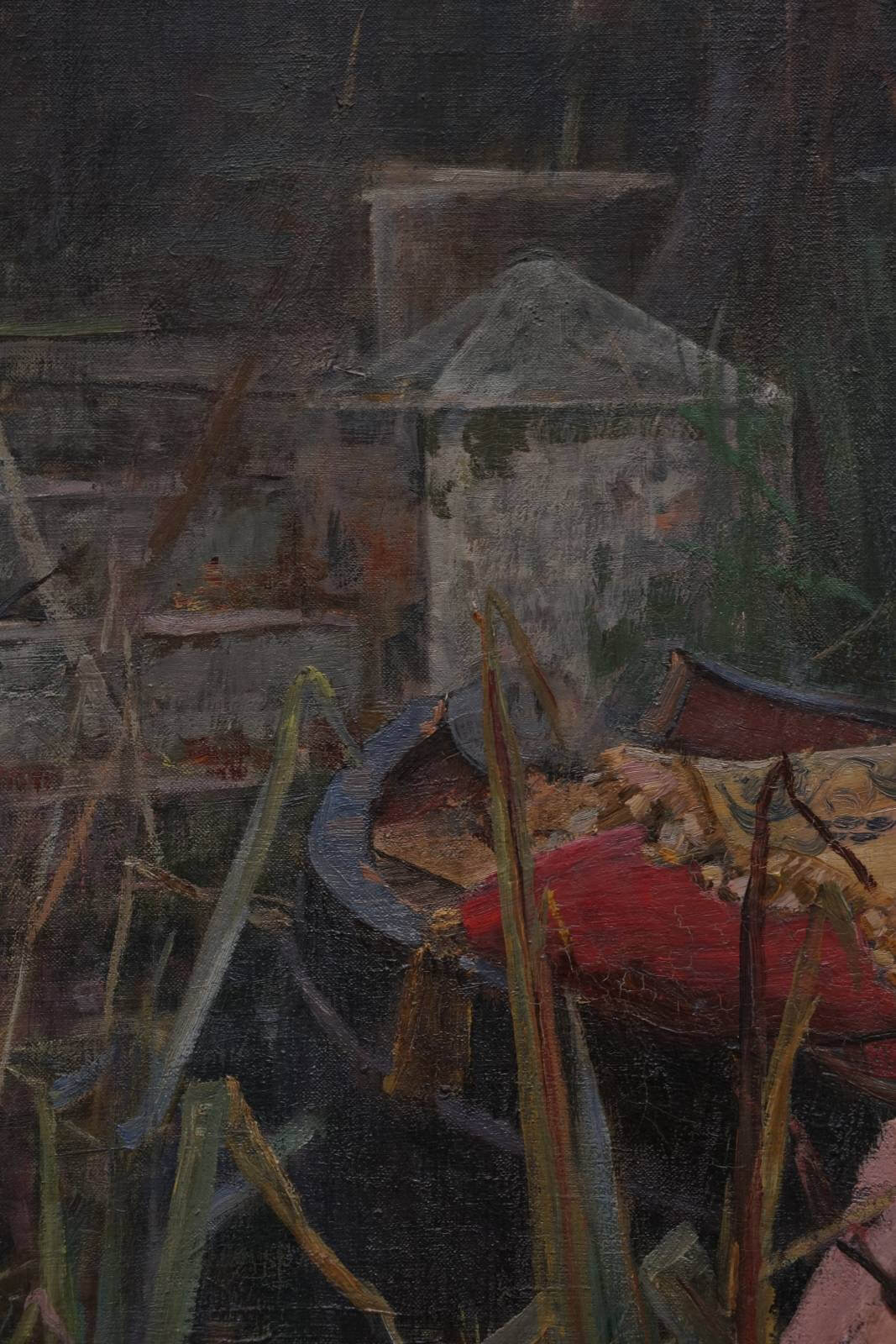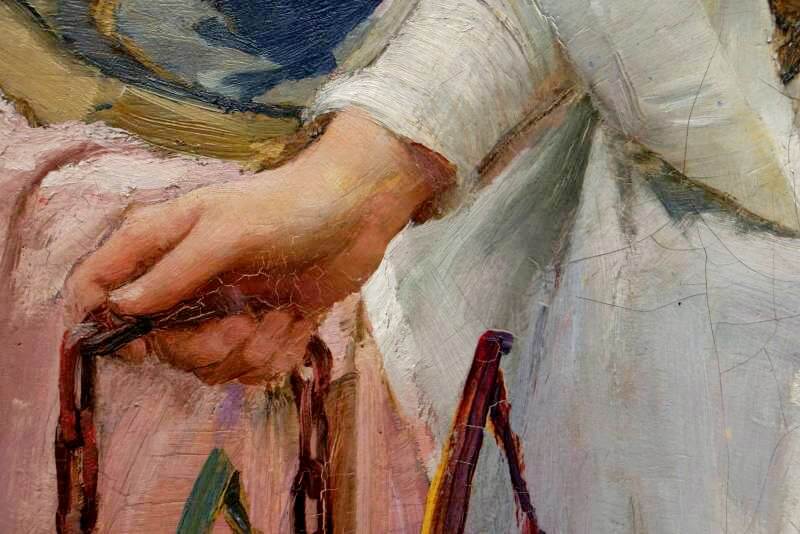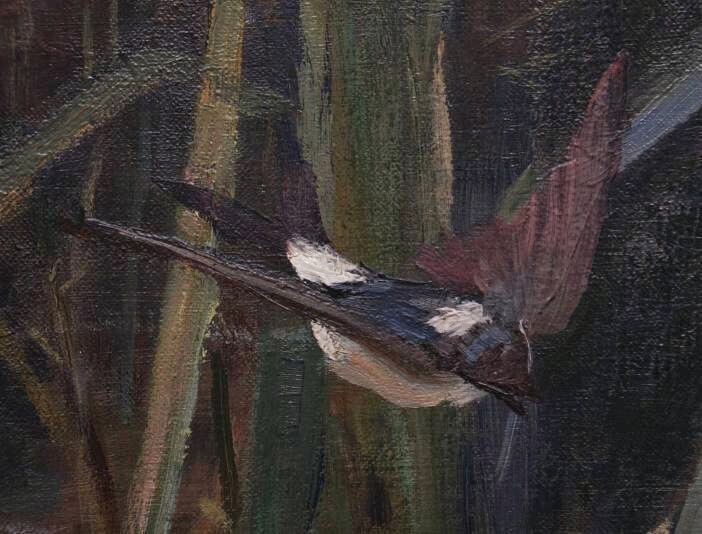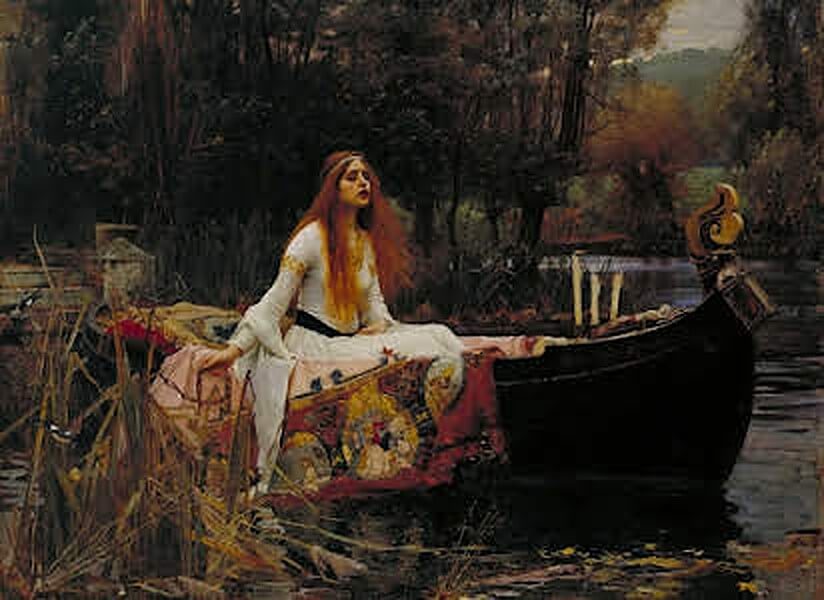Reading Time: 5 minutes
Monika, an Art-historian, critiques ‘The Lady of Shalott’, a poem by Lord Alfred Tennyson, and a painting of the same name by John William Waterhouse. It’s a unique intersection of poetry and painting – an exclusive for Different Truths.
The masterpiece The Lady of Shalott was created by the renowned English painter John William Waterhouse in 1888. He was inspired by Lord Tennyson’s poem of the same name, penned in 1832. The painting vividly captures the climactic scene from the literary work.
Waterhouse’s The Lady of Shalott is an iconic painting and possibly one of his best-known oils. As with many of his other works, Waterhouse focuses on the plight of a beautiful and tragic woman. He uses symbolism and realism to convey the story based on the poem by Lord Alfred Tennyson.
John William Waterhouse’s 1888 painting shows a woman caught between death and desperation …
John William Waterhouse’s 1888 painting shows a woman caught between death and desperation, trapped in the tragedy of love.
"...Who is this? and what is here?
And in the lighted palace near
Died the sound of royal cheer;
And they cross'd themselves for fear,
All the knights at Camelot:
But Lancelot mused a little space;
He said, "She has a lovely face;
God in his mercy lend her grace,
The Lady of Shalott."
(The last stanza)
Alfred Lord Tennyson’s four-part poem, The Lady of Shalott, tells the story of a young medieval woman mysteriously imprisoned on an island near Camelot. She must weave a colourful web and only watch the outside world through a mirror. If she looks at Camelot directly, she will be cursed.
Lord Tennyson’s poem, The Lady of Shalott, parallels the life of Ophelia.
Lord Tennyson’s poem, ‘The Lady of Shalott’, parallels the life of Ophelia. Tennyson’s poem, written over 200 years after Hamlet, is about a young woman who lives on an island off the coast of Camelot.
Tennyson probably was enthralled by medieval literature and the culture of Arthurian legends. He was inveigled by the romance of a lost era and its chivalric code. The original version of his epic poem, The Lady of Shalott, had twenty stanzas, which he wrote when he was just 22 years old.
Separation, loneliness, and mysticism are predominant elements that describe the poem. The theme revolves around the Enigma of the Lady of Shalott, who is confined yet accepts it as her destiny. She is emotionally and physically detached from the real world.
By inscribing The Lady of Shalott on the boat amidst an Autumn storm on the boat, she tries to give herself a title, making her death a work of art. This is a concluding act of sanguine self-definition. She, beyond a doubt, proves that, finally, she is free from her confinement.
The lady’s nemesis resulted from her attraction to Sir Lancelot. Her curse was entirely composed until she saw his reflection in the mirror and was drawn to look at him directly, even though she knew it might cost her. Her death is an illusion — an escape from solitude, the curse, and the shackles of orthodoxy. In the end, Sir Lancelot prays to God for mercy.
Her imprisoned insulation is a formidable allegory for the intellectual, social, and sexual suppression of women across history.
The saga recounts a traditional practice of women’s travails. Her imprisoned insulation is a formidable allegory for the intellectual, social, and sexual suppression of women across history.
The irony remains that the Lady risked her life for Lancelot, a man she does not know. His semblance had such a convincing effect on her that he did not even notice her.
The artistic creation affiliates the Lady with the artistic temperament. She becomes a ‘metaphorical muse’ for the soul of the artist. The lady defies her role and turns outward. Her carefully constructed interior space falls apart.




***
Analysis of the Painting
A boat, on its prow, an illustration can be seen which correlates the poem’s stanza when the lady etches the words ‘The Lady of Shalott’. She is seen clenching the chain with her right hand.
Inside the boat can be seen the detailed tapestry, which the Lady was ‘portended’ to weave until she became cursed by falling for Lancelot. In his poem (Part-III, Stanza-V), Tennyson symbolises the tapestry as a ‘web’, which was effaced supernaturally.
Only two pictures on the tapestry are clearly visible. On the left is a towered castle, and a long-haired woman is seen outside it. The tapestry is decorated with images of what she yearned to be a part of.
The image is supposed to be a sub rosa portrayal of the lady.
The image is supposed to be a sub rosa portrayal of the lady. However, there is no mention of this representation in Tennyson’s poem.
On the left-hand side of the painting, steps can be seen leading down from a large stone building to the river, where the lady is seated in the boat. This probably portrays how the Lady left her home where she had lived for no one knows how many years. The scenery in the painting also shows two swallows to the left in the foreground of the composition.
There is a crucifix with a rosary draped over the corpus. Her eyes are directed away from the cross. Her mouth appears slightly opened, and her head is at a perfect angle to blow one lit candle out of three candles. The third one signifies death, which the Lady is about to douse.
This enigmatic painting by J W Waterhouse is his typical style, consisting of elements of the Pre-Raphaelite Brotherhood.
This enigmatic painting by J W Waterhouse is his typical style, consisting of elements of the Pre-Raphaelite Brotherhood. He explores themes relating to the different archetypes of women from literature and mythology. He was a romantic artist in the truest sense.
The Lady of Shalott adorns Tate Britain, London. Sir Henry Tate donated it to the public in 1894. It was one of the original paintings gifted by Tate.
Visuals sourced by the author
















Thank you for an enriching read!
Thank you Sir for the appreciation. I’m glad you liked the article. It really means a lot.